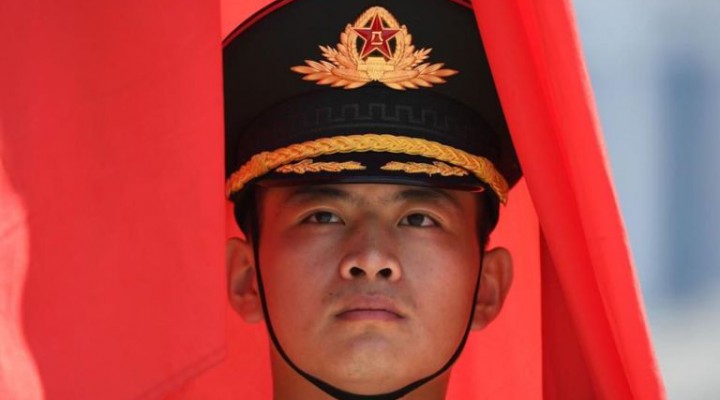Belt & Road on track
Geopolitically, the analysis by the French think tank CAPS, a subsidiary of the Ministry of Foreign Relations in Paris, has become practically a mantra across the West.
CAPS is alarmed that China has become indispensable, while questioning its “values” and “hidden agenda.” With the EU totally paralyzed and graphically proving its irrelevance on myriad levels, especially in terms of agreeing upon an effective rescue package for all its members, the – declining – West, almost in block, is terrified that China is in the irreversible process of becoming the top global power.
Even after suffering the massive Covid-19 blow, Beijing seems to be in control of all base variables in its economic policy (financial institutions, large corporations). The CCP will double down on developing the whole production machine side by side with widespread application of AI techniques.
What seems to be established by now is that China will first secure its own national interests – in terms of global supply chains and exports. Short and medium term, there will be concentrated focus on selected New Silk Roads overland and maritime connectivity corridors – Health Silk Road included.
Even with Covid-19, China’s trade with Belt and Road nations grew 3.2% in the first quarter, not shabby even when compared with the 10.8% for the whole of 2019.
According to the Ministry of Commerce, Beijing’s trade with 56 Belt and Road nations scattered across Asia, Africa, Europe and South America represents a very important 30% of total annual trade. Now compare it to the 13% to 32% contraction in global trade forecast by the World Trade Organization for 2020.
So even if a trade drop in the first quarter of 2020 was more than predictable, it’s bound to pick up quickly especially in relation to Southeast Asia, Eastern Europe and the Arab world.
Belt and Road is predictably facing myriad short and middle term challenges – all linked to broken connectivity: supply chain breakdowns, widespread travel and visa restrictions, severe border controls, project delays because of increased costs.
Examples include the $6 billion, 150 km-long Jakarta-Bandung high-speed rail in Indonesia, with technical experts from China only slowly trickling back in after being absent because of government restrictions. Along the China-Pakistan Economic Corridor, mandatory quarantine for Chinese technicians has frozen progress for at least two months. The same applies to projects in Bangladesh and Sri Lanka.
According to an Economist Intelligence Unit report, Covid-19 will derail Belt and Road in 2020. That may have been the case only for the first four months of the year. Even under Covid-19, Beijing has signed deals for new Belt and Road projects in Myanmar, Turkey and Nigeria.
The 414-km long China-Laos high-speed rail – connecting Yunnan, via Vientiane, to Thailand, Malaysia and Singapore – remains on track, with completion scheduled for the end of 2021. ASEAN, significantly, is now China’s number one trade partner, ahead of the drowning-in-crises EU.
Watch digital yuan
The key takeaway from all this is that the CCP’s complex macro-strategy will be undisturbed. That implies that China will remain the top engine of the global economy, with or without decoupling, and with Belt and Road at the very core of China’s macro-foreign policy strategy, coupled with a solid drive towards multilateralism.
As much as vast swathes of the world economy, especially across the Global South, show no intention of decoupling from China, Beijing will have to be ready to counterpunch full-spectrum hybrid war by Washington on every front – geo-economic, cybernetic, biological, psychological.
As Kishore Mahbubani detailed in his latest book, that does not mean that China will have the intention – and the capacity – to become a new gendarme of the world. It will certainly turbo-charge its economic and financial power, as in the careful implementation of the possibly gold-backed digital yuan.
And then there’s the relentlessly evolving game-changer responsible for the US establishment’s sleepless nights: the Russia-China strategic partnership.
Two weeks ago, an immensely important geopolitical development was virtually buried by corona-hysteria.
Moscow is very much aware that Washington is deploying missile defense systems very close to Russia’s borders – carrying the potential to deliver a nuclear first strike. Beijing is following this development with alarm.
Moscow being aware of it is just part of the story: the key point is that Russia is confident sophisticated weapons such as the Sarmat and the Avangard will take care of it.
More complex is the issue of Pentagon bioweapon labs in the former USSR – an issue also closely followed by Beijing. Moscow has identified a lab near Tblisi in Georgia, and 11 of them in Ukraine. And way back in 2014, when Crimea was reunited with Russia, scientists also found a lab in Simferopol.
All this information – nuclear and bioweapons – as intel sources confirmed to me, is exchanged at the highest level of the Russia-China strategic partnership.
The next big move in the geopolitical chessboard points to the partnership negotiating their bilateral relations with the US as a team.
Nothing could be more rational, considering they are regarded as the top two “threats” to the US, according to the National Security Strategy.
Talk about a major paradigm shift.
China forges ahead through chaos and threats

 TheAltWorld
TheAltWorld 








0 thoughts on “China forges ahead through chaos and threats”